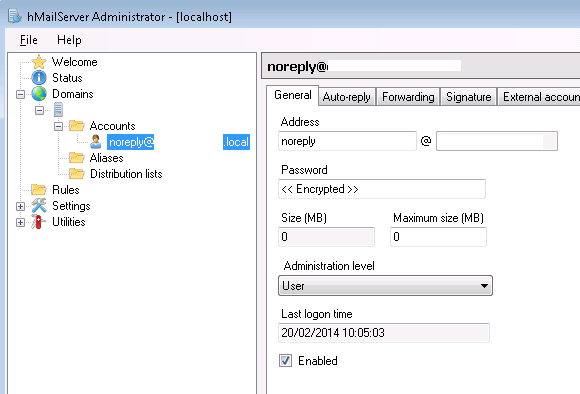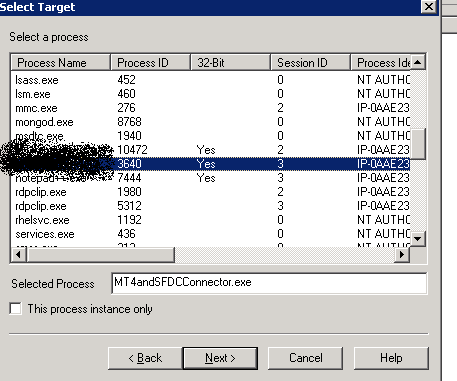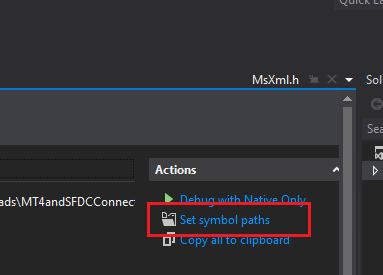What’s The Deal With Half Up and Half Even Rounding?
java.math package came with several rounding mode but there are 2 quite interesting ones: HALF_UP and HALF_EVEN rounding.
HALF_UP
This is basically your elementary school rounding. If the fractions to be rounded are equidistant from its neighbor, then round them into the upper neighbour. In other words, if we’re rounding 1 digit after decimal, then if it ends with .5 just add .5. For example:
| Fractional Number | Rounded |
|---|---|
| 0.1 | 0 |
| 0.5 | 1 |
| 1.3 | 1 |
| 1.5 | 2 |
HALF_EVEN
Similar like HALF_UP, except if the fraction is equidistant, round them into nearest even neighbor. For example:
| Fractional Number | Rounded |
|---|---|
| 0.1 | 0 |
| 0.5 | 0 |
| 1.3 | 1 |
| 1.5 | 2 |
Why Bother With HALF_EVEN?
Why don’t we just stick with what’s learned in elementary school? Well here’s one good reason: accumulative error. Error here means “How much did we lose/gain by rounding the number?”. Let’s take a look again to both table with its rounding error displayed
| Fractional Number | HALF_UP rounding | HALF_UP rounding error | HALF_EVEN rounding | HALF_EVEN rounding error |
|---|---|---|---|---|
| 0.0 | 0 | 0.0 | 0 | 0.0 |
| 0.1 | 0 | -0.1 | 0 | -0.1 |
| 0.2 | 0 | -0.2 | 0 | -0.2 |
| 0.3 | 0 | -0.3 | 0 | -0.3 |
| 0.4 | 0 | -0.4 | 0 | -0.4 |
| 0.5 | 1 | 0.5 | 0 | -0.5 |
| 0.6 | 1 | 0.4 | 1 | 0.4 |
| 0.7 | 1 | 0.3 | 1 | 0.3 |
| 0.8 | 1 | 0.2 | 1 | 0.2 |
| 0.9 | 1 | 0.1 | 1 | 0.1 |
| 1.0 | 1 | 0.0 | 1 | 0.0 |
| 1.1 | 1 | -0.1 | 1 | -0.1 |
| 1.2 | 1 | -0.2 | 1 | -0.2 |
| 1.3 | 1 | -0.3 | 1 | -0.3 |
| 1.4 | 1 | -0.4 | 1 | -0.4 |
| 1.5 | 2 | 0.5 | 2 | 0.5 |
| 1.6 | 2 | 0.4 | 2 | 0.4 |
| 1.7 | 2 | 0.3 | 2 | 0.3 |
| 1.8 | 2 | 0.2 | 2 | 0.2 |
| 1.9 | 2 | 0.1 | 2 | 0.1 |
| 2.0 | 2 | 0.0 | 2 | 0.0 |
| Total | 1 | 0 | 0 |
As you can see the accumulative errors for HALF_UP is incrementally higher whereas HALF_EVEN averages out. This is why HALF_EVEN is often called “Banker’s rounding” because given a large amount of data the bank should not gain/loss money because of rounding.
More Surprises With printf
Don’t yet assume all programming language defaults into HALF_EVEN, try below examples of printf in your shell:
$ printf "%.5f" 1.000015 1.00002 $ printf "%.5f" 1.000025 1.00002 $ printf "%.5f" 1.000035 1.00004 $ printf "%.5f" 1.000045 1.00005
Wait.. what? Isn’t 1.000045 supposed to be rounded to 1.00004? Well in floating point realm the reality is more complicated than that, taking into account floating point is often never accurate in the first place.
Try printing 1.000045 with long enough digits after decimal:
$ printf "%.30f" 1.000045 1.000045000000000072759576141834
Now you can see computers can’t always store accurate value of real numbers in floating point types. (And you should now see why it’s rounded into 1.00005)
Here’s some reading if you’re interested in this problem.
WordPress Config For Nginx PHP-FPM
Here’s how you can setup nginx and php-fpm for use with wordpress. It is assumed you have nginx and and php-fpm installed.
Requirements:
- Domain mycooldomain1.com pointing to <server ip>
- wordpress installed on /usr/share/mycooldomain1.com_wordpress
- php-fpm listening on port 9000
Then on /etc/nginx/nginx.conf:
http {
...
server {
server_name mycooldomain1.com;
access_log /var/log/nginx/mycooldomain1.com.access.log main;
error_log /var/log/nginx/mycooldomain1.com.error.log;
location / {
root /usr/share/mycooldomain1.com_wordpress;
index index.php index.html index.htm;
# unless request is for a valid file, send it as a query to index.php
# this will allow clean url (eg: mycooldomain1.com/hello/world)
if(!-e $request_filename)
{
rewrite ^(.+)$ /index.php?q=$1 last;
}
}
location ~ \.php$ {
fastcgi_pass localhost:9000;
fastcgi_index index.php;
fastcgi_param SCRIPT_FILENAME /usr/share/mycooldomain1.com_wordpress;
fastcgi_param REQUEST_METHOD $request_method;
fastcgi_param CONTENT_TYPE $content_type;
fastcgi_param CONTENT_LENGTH $content_length;
include fastcgi_params;
}
}
}
Restart both nginx and php-fpm once you’ve updated the config:
sudo service nginx restart sudo service php-fpm restart
Nginx Virtual Host and Reverse Proxy
Firstly, there’s no such thing as Virtual Host in nginx. As the doc mentions, Virtual Host is an apache terminology.
Scenario:
- Domain mycooldomain1.com pointing to VPS server
- Nginx running on port 80
- Tomcat running on port 8080
- Only inbound TCP traffic to port 80 is allowed through firewall
In your nginx.conf (mine’s on /etc/nginx/nginx.conf), add following inside the http element:
http {
...
server {
server_name mycooldomain1.com;
access_log /var/log/nginx/mycooldomain1.com.access.log main;
error_log /var/log/nginx/mycooldomain1.com.error.log;
location / {
proxy_pass http://localhost:8080;
proxy_redirect default;
proxy_cookie_domain localhost mycooldomain1.com;
}
}
...
}
The server_name and location / expression matches request to http://mycooldomain.com while proxy_pass sets the backend where the response will be fetched from.
proxy_redirect ensures any 3xx redirects and Location: header on response is rewritten into mycooldomain1.com.
DOS Script To Cap Log Files
I have this common problem where my servers generates about 5-6 megs of log file every day filling up the disk, and following dos script to delete old logs have been quite handy
:: Iterate files alphabetically at specified folder and keep a maximum of N to
:: avoid filling disk space. Called by run.bat
:: This script takes 3 arguments
@echo off
setlocal ENABLEDELAYEDEXPANSION
set FOLDER=%1
set FILEPREFIX=%2
set LIMIT=%3
echo Accessing %FOLDER%
cd %FOLDER%
set /a COUNT=0
for /f "tokens=*" %%f in ('dir /b /a-d-h-s /o-n %FILEPREFIX%*') do (
set /a COUNT=COUNT+1
if !COUNT! GTR %LIMIT% (
echo deleting %%f
del /f /q %%f
)
)
endlocal
I place the script above in C:\filecleaner\deletefiles.bat. This script iterates a folder alphabetically and keep only specified amount of files. I then created a second script to be called by task scheduler
:: Called by task scheduler. This script calls deletefiles.bat over each file path prefix :: :: Example: :: deletefiles.bat c:\logrotate-test access.log 3 :: means keep maximum 3 files (sorted alphabetically) starting with access.log @echo off deletefiles.bat "C:\apache-tomcat-6.0.35" catalina 7 deletefiles.bat "C:\apache-tomcat-6.0.35" commons-daemon 7 deletefiles.bat "C:\apache-tomcat-6.0.35" host-manager 7 deletefiles.bat "C:\apache-tomcat-6.0.35" localhost 7 deletefiles.bat "C:\apache-tomcat-6.0.35" manager 7 deletefiles.bat "C:\apache-tomcat-6.0.35" tomcat6-stderr 7 deletefiles.bat "C:\apache-tomcat-6.0.35" tomcat6-stdout 7
I put this script in C:\filecleaner\run.bat. As you can see it calls deletefiles.bat several times to clean my tomcat log files. The script uses following arguments:
- The folder where the log files exist
- The prefix of the log files
- How many latest files should be kept
It’s important to note this will only work if the files alphabetical ordering implies their age. This typically works best if the files pattern has a yyyy-MM-dd format (or similar at the end):
stdout.2013-12-04.log stdout.2013-12-05.log stdout.2013-12-06.log stdout.2013-12-07.log
Finally to run this automatically every 3.30am in the morning I created a task scheduler with following action:
Financial Time in Java
Yes dealing with time is always one good source of confusion. If you deal with financial application, many uses New York City as a guideline. A trading platform I’m working at on a daily basis uses NY+7 time zone such that 5pm in New York coincide with midnight. This is how you can format current NY+7 time (keep in mind USA do have DST and your local time zone might/not have it):
int offsetMillis = TimeZone.getTimeZone("America/New_York").getRawOffset();
TimeZone nyPlus7 = new SimpleTimeZone(offsetMillis + 7 * 3600 * 1000, "NY+7");
DateFormat df = new SimpleDateFormat("yyyy-MM-dd HH:mm:ss");
df.setTimeZone(nyPlus7);
String nyPlus7TimeNow = df.format(new Date());
It’s important to understand the best practice is to never store time data in string. Stick to java Date object or alike. Only format your time to string whenever you need to present it visually
hMailServer for Outbound Only SMTP Server
If you ever needed to write program that sends email, most likely you’ll need a SMTP server. Here’s how you can configure one on a Windows box using hMailServer.
New Domain
After downloading and installing, you need to add a new domain to hMailServer. In my case I will not be using hMailServer to accept incoming email, hence I did not put the company’s email domain. Doing so will cause email to your colleague to be routed locally and likely fails.
So go ahead add a new domain, and just give it the local machine name (eg: devbox01.local). You have to pick a name that resembles an actual domain (with a dot and suffix), otherwise hMailServer will rejects it.
New Account
Once you’ve setup the domain, create a new account noreply@devbox01.local
Set a password, and that’s it you’re done. You can now use the SMTP server for outbound email
- Username: noreply@devbox01.local
- Password: whatever password you put in
- SMTP host: devbox01
- SMTP port: 25
Important
Now what’s left to do is configuring firewall. If you program runs on the same box you might not need to do anything. However it’s good to check that no outside traffic from internet can connect to port 25 so no-one can abuse your SMTP server.
About Apache Compression and Content-Length Header
Just resolved an interesting problem today, one of our code breaks because the response header set by the web server did not include Content-Length.
Spent quite a while investigating and turns out this is due to gzip compression. As seen below Content-Encoding is gzip and I think this causes Content-Length to be omitted.
Gzip compression can be disabled on apache via .htaccess config. In my case I disabled all compression to swf file by adding following configuration
<FilesMatch "\.swf$"> SetEnv no-gzip 1 </FilesMatch>
Using File Protocol to Deploy Maven Project To Windows Shared Folder
Our development team is fairly small and we’re not at the point where we need Nexus yet, so I decided we can try using a simple Windows server share as our internal Maven repository.
On each of our shared Maven project pom.xml we add following distributionManagement configuration:
<distributionManagement>
<repository>
<id>enfinium</id>
<name>Enfinium Internal Repository</name>
<url>file://mavenrepo/maven_repository</url>
</repository>
</distributionManagement>
Where //mavenrepo/maven_repository is the Windows server share we’ve setup. We’ve made sure each team member has correct read/write permission.
However every time we deploy Maven would say everything is successful but the file is nowhere to be found on the remote repository. (We’re using Maven 3.1.0
Turns out with file protocol and Windows server share, this is the syntax that works for us (yes Maven just fail silently and said everything was SUCCESSFUL)
file://\/\/mavenrepo/maven_repository
Generating Visual C++ Crash Dump For Debugging
Detecting cause of problem that occurs only in production environment is hard. For Visual C++ created native windows application, this can be done using DebugDiag tool.
Download and install the tool on the production server, run it, and create a Crash rule type
Select a specific process target:
And search for your process
Tick This process instance only if multiple processes with same name are running but you’re only interested in one.
Click next and accept all defaults. Then when the crash occurs, you will get a .dmp file on C:\Program Files\DebugDiag\Logs\Crash rule for process id NNNN folder.
This .dmp file can be copied into your PC and opened in Visual Studio for stack trace analysis. Don’t forget you need to tell Visual Studio where to find the symbol (.pdb) file.
Select Set symbol paths on Visual Studio Action bar and add the folder containing your .pdb file.
Then start the debugging session by selecting Debug with Native Only. Visual Studio will tell you the stack trace when the crash happens.
Thanks to Ganesh R for providing this solution on Stack Overflow.
Also checkout Microsoft’s documentation on DebugDiag.







You must be logged in to post a comment.